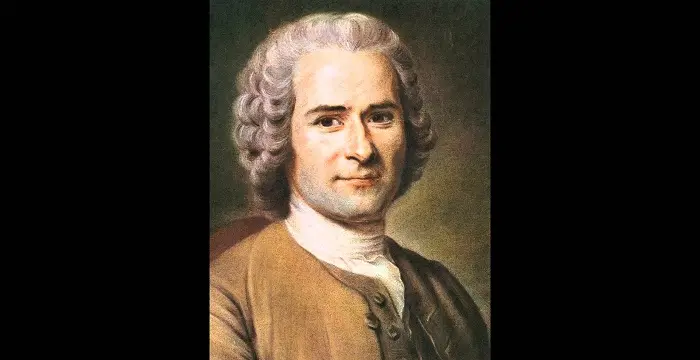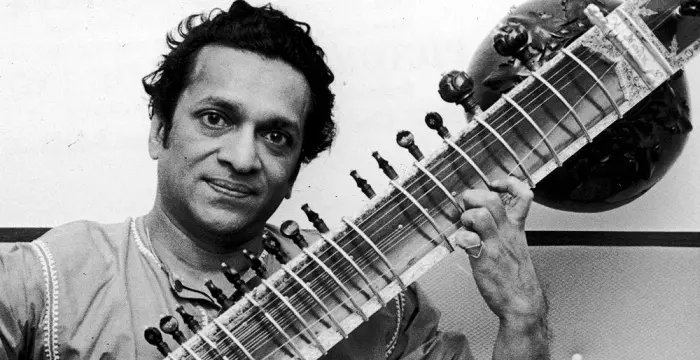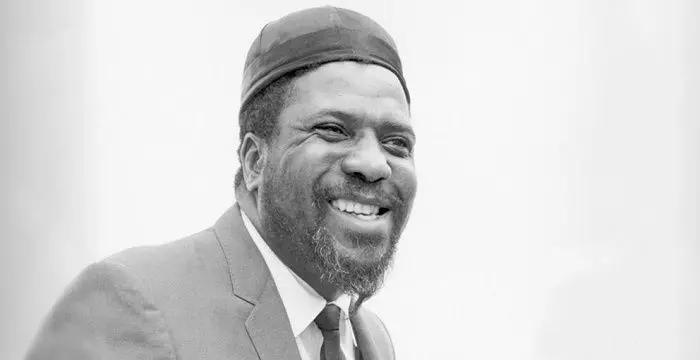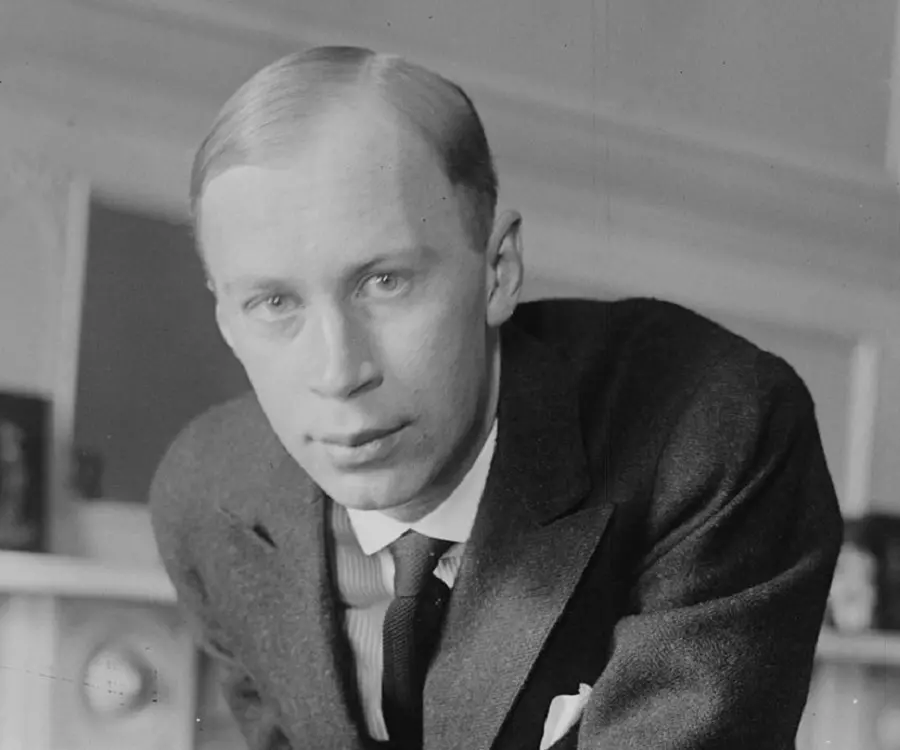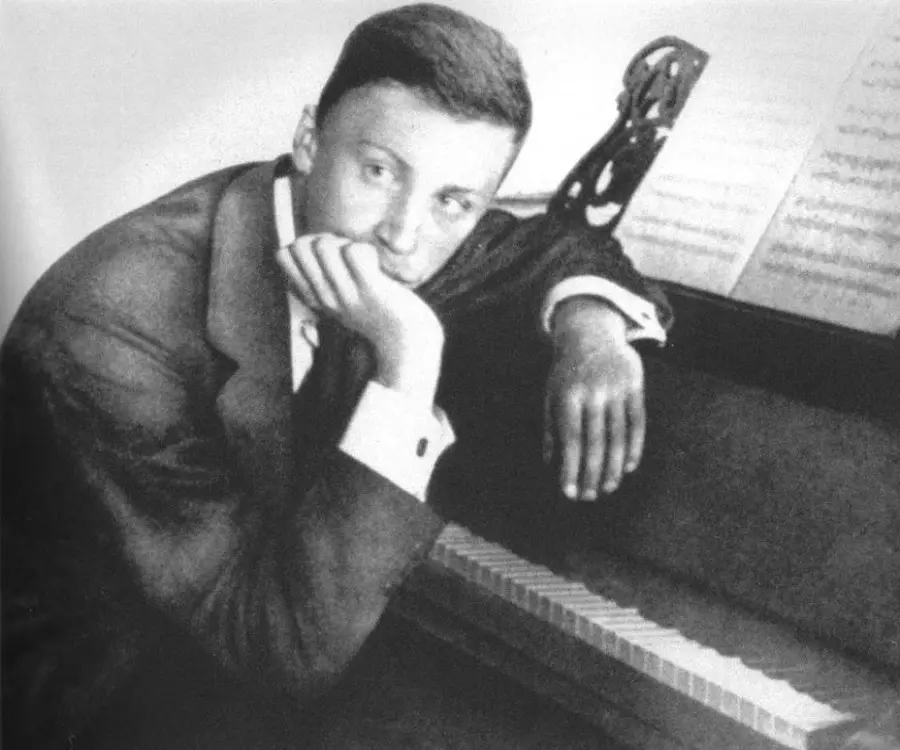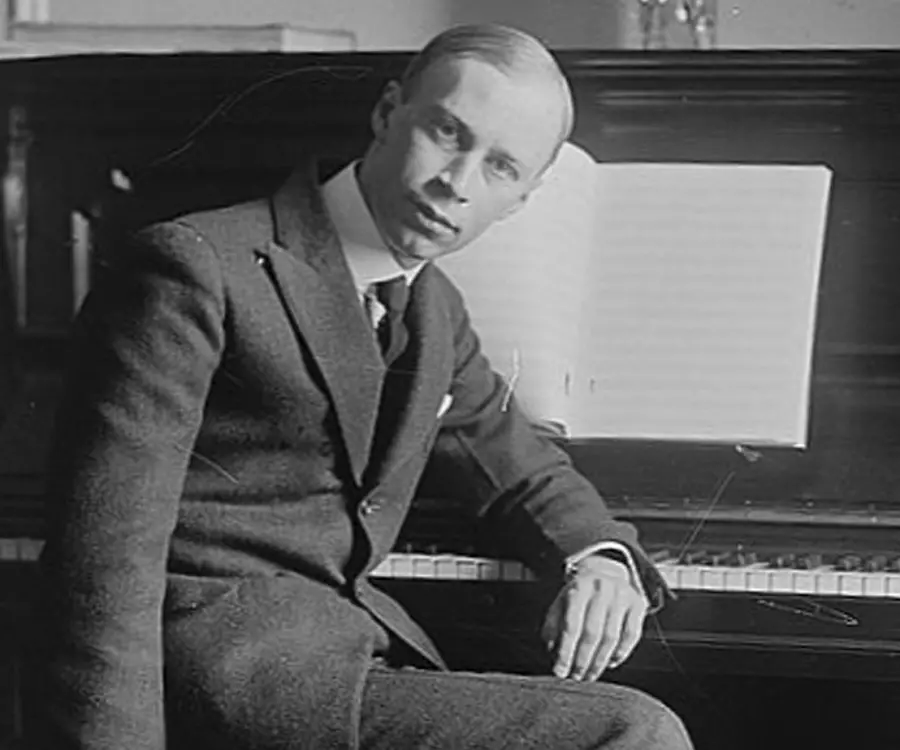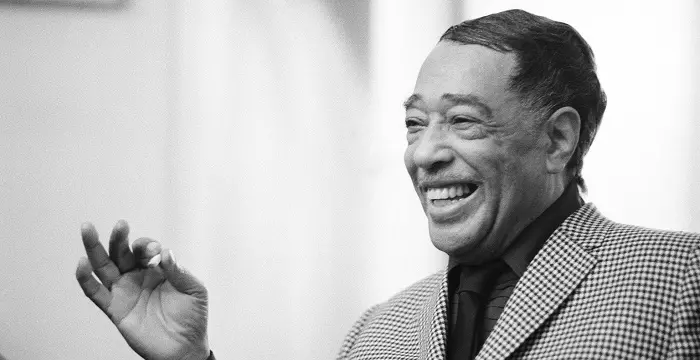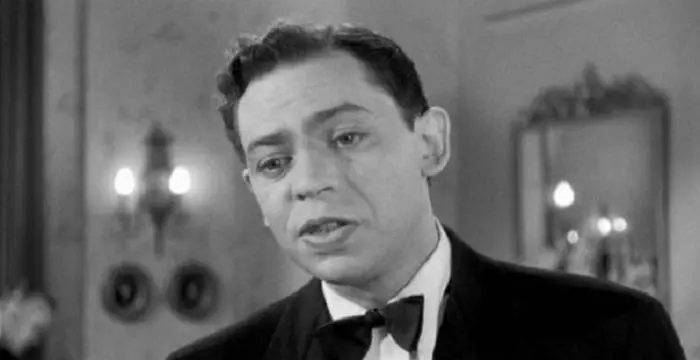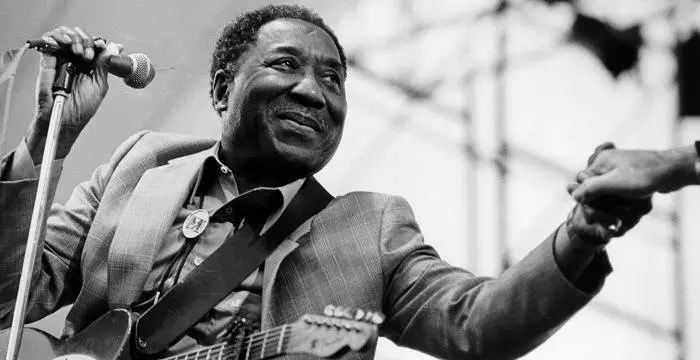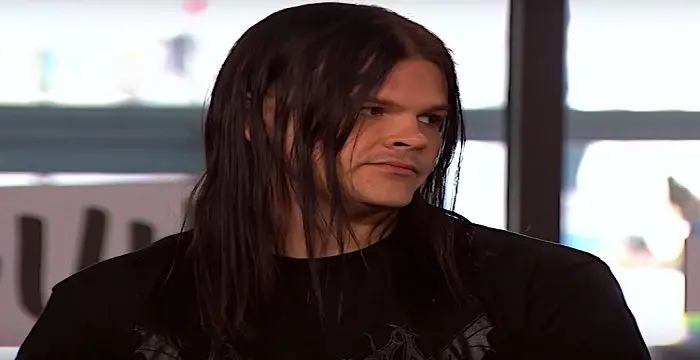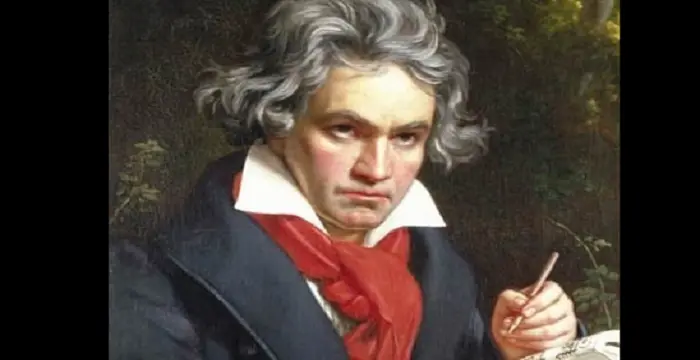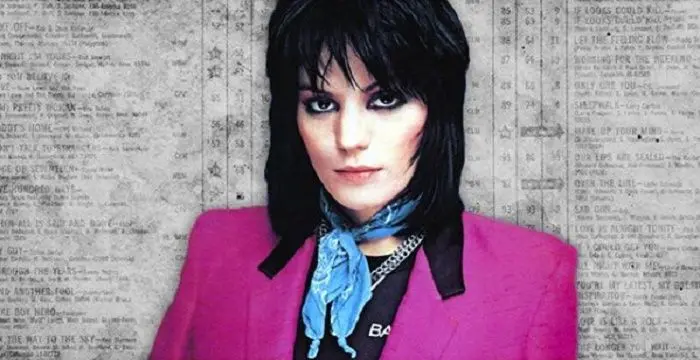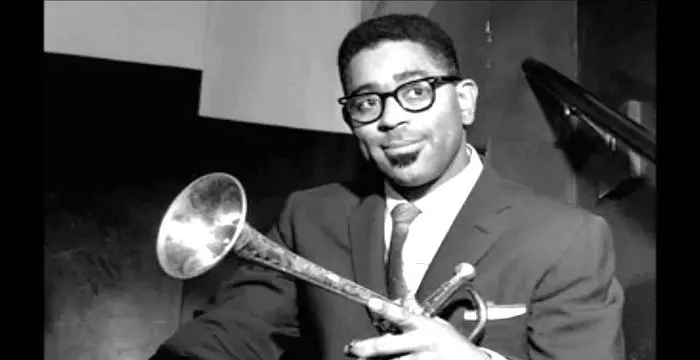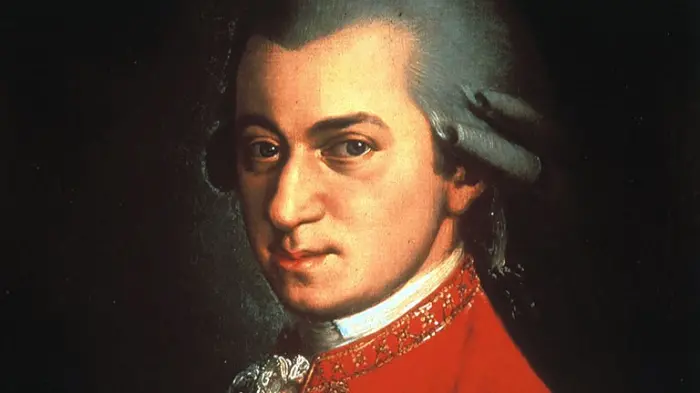
Sergei Prokofiev - Pianists, Life Achievements and Family
Sergei Prokofiev's Personal Details
Sergei Sergeyevich Prokofiev was a Russian composer, pianist and conductor
| Information | Detail |
|---|---|
| Birthday | April 23, 1891 |
| Died on | March 5, 1953 |
| Nationality | Ukrainian |
| Famous | Musicians, Pianists, Composers, Composers, Pianists |
| Spouses | Lina Prokofiev (m. 1923–1941), Mira Mendelson (m. 1948–1953) |
| Childrens | Oleg Prokofiev, Sviatoslav Prokofiev |
| Universities |
|
| Birth Place | Krasne, Ukraine |
| Gender | Male |
| Father | Sergei Alekseevich Prokofiev |
| Mother | Maria Grigoryevna Zhitkova |
| Sun Sign | Taurus |
| Born in | Krasne, Ukraine |
| Famous as | Composer and pianist |
| Died at Age | 61 |
// Famous Composers
Jean-Jacques Rousseau
Jean-Jacques Rousseau was a noted Swiss-born philosopher, writer and composer. Check out this biography to know about his childhood, family life, achievements and other facts about his life.
Ravi Shankar
Ravi Shankar was one of the greatest music maestros from India who familiarized the West with the Indian classical music. Read the biography to know all about his profile, childhood, life and timeline.
Thelonious Monk
Thelonious Monk was an American jazz artist, pianist and composer, who is considered as one of the pioneers of the American jazz music. This biography provides detailed information on his childhood, life, music career, achievements and timeline.
Sergei Prokofiev's photo
Who is Sergei Prokofiev?
Sergei Sergeyevich Prokofiev was a Russian composer, pianist and conductor born in the late nineteenth century in what today is known as eastern Ukraine. Composing his first music at the age of five, he entered St. Petersburg Conservatory at the age of thirteen and made his first public appearance four years later. Soon he made his name known nationwide, but after the February Revolution, he realized that he had little scope in Russia and left first for USA and then for France with an official passport. Later he returned to his homeland and by the age of fifty-four began to be counted as the foremost composer of Soviet Union. Unfortunately soon after that, he fell foul with the authorities and had eight of his major works banned from public performances. His last years were spent in ill health and financial constraints, but a few years after his death, he once again began to be counted as one of the best Russian composers working in every genre of music, including symphonies, concerti, film music, operas, ballets, and program pieces.
// Famous Pianists
Duke Ellington
Duke Ellington was an American jazz composer and performer who is among one of the greatest names in the history of jazz. This biography profiles his childhood, life, music career, achievements and timeline.
Andy Biersack
Learn about Andy Biersack, the famous American rock singer and pianist; his birthday, what he did before fame, his family life, fun trivia facts and more.
Oscar Levant
Oscar Levant was a pianist and comedian known for playing sarcastic characters on screen. This biography of Oscar Levant provides detailed information about his childhood, life, achievements, works & timeline.
Childhood & Early Years
Sergei Sergeyevich Prokofiev was born on 23 April 1891 in Sontsovka, then a remote rural estate under Russian Empire. It is now part of Donetsk Oblast in eastern Ukraine and is known by the name Krasne.
His father, Sergei Alexeyevich Prokofiev, an agronomist, was a soil engineer at Sontsovka at the time of his birth. His mother Maria/Grigoryevna (née Zhitkova) Prokofieva, was an accomplished pianist. The daughter of a former serf, she was tutored in theatre and art by her master’s family from an early age.
Sergeyevich was his parents’ only surviving child, having two elder sisters who died in infancy. Watching his interest in music, he mother gave him his first lesson in piano as he turned three.
As Sergeyevich turned five, he composed his first piece. Meant for piano, it was called ‘Indian Gallop’. The composition was written by his mother in the F Lydian mode. Subsequently, he wrote a few more pieces.
In 1899, his parents took him to Moscow, where he for the first time heard an opera. Intrigued, he began to write one. Very soon a libretto in three acts and six scenes was ready. Later with the help of his mother, he transcribed the music.
In 1902, Sergei Sergeyevich Prokofiev was taken to meet Sergei Taneyev, the Director of the Moscow Conservatory. Impressed by his musical talent, Taneyev persuaded composer and pianist Reinhold Glière to give him private lessons during the summers of 1902 and 1903.
It was during this period that Prokofiev first tried his hand at symphony. Slowly, he also started experimenting with harmonies, leading to the creation of a number of short piano pieces. He called them "ditties", and these later laid the foundation of his musical style.
At St. Petersburg Conservatory
Although it was evident that Sergei Prokofiev was a musical genius his parents were hesitant about pushing him into a career in music at such an early stage. Contrarily, they were keener on taking him to Moscow, where he could attend a good school. Later however, they decided on St. Petersburg.
In 1904, mother and son traveled to Petersburg, where they met composer Alexander Glazunov, also a professor at the Saint Petersburg Conservatory. Impressed by the boy’s talent, he urged his mother to allow him to enter the Conservatory.
Prokofiev studied at Petersburg Conservatory from 1904 to 1914. Much younger than his batch mates, he often annoyed them by keeping a list of their mistakes, but impressed his teachers with his innovative skills.
In 1908, while he was still a student at the Conservatory, Prokofiev made his first public appearance at the St Petersburg Evenings of Contemporary Music. In the following year, he graduated from his class in composition, but remained attached to the Conservatory till 1914, improving his techniques in piano conducting.
In 1910, as his father died, it fell upon him to earn his upkeep. He had by then made a name for himself outside the Conservatory and therefore, he was able to sustain himself. His mother too helped him financially.
His situation improved in 1911, when he was introduced to the music publisher Boris P. Jurgenson who offered him a contract. In the same year, he visited Moscow and appeared in the symphony concerts, where he made his presence felt.
Prokofiev had his first major work, ‘Piano Concerto No. 1 in D-flat major’, performed at Moscow on 25 July 1912. It was very well received and he performed it once again on 7 August 1912. In the following year, he visited Paris and London. This was his first foreign trip.
Returning home, he decided to appear for, what was known as the ‘Battle of the Pianos’, at the St. Petersburg Conservatory with his own composition. As the rule required that the piece be published, he got hold of a publisher, who agreed to publish twenty copies of ‘Piano Concerto No. 1 in D-flat major’.
The competition was held on 8 May 1914 and the jury was headed by Alexander Glazunov. The performance went on so well, that Prokofiev was awarded the Anton Rubinstein Prize, though a little reluctantly. With this his association with the St. Petersburg Conservatory came to an end.
During WWI & Russian Revolution
In 1914, soon after winning the Anton Rubinstein Prize, Sergei Prokofiev set out for England. Here he met Sergei Diaghilev, who commissioned him to write his first ballet, ‘Ala and Lolli’. Subsequently, as the World War I broke out, he returned to Russia, but continued to work on it.
Exempted from joining the war as the only son of a widow, he spent the time perfecting his techniques in organ, concurrently composing a number of pieces. Meanwhile in 1915, he completed ‘Ala and Lolli’; but when he submitted the work, Diaghilev rejected it because it lacked Russian character.
Diaghilev then helped Prokofiev to choose the topic from a collection of Alexander Afanasyev’s folktales. The result was ‘Chout (The Fool)’. However, it needed to be revised several times before it met Diaghilev’s approval. Meanwhile between November 1915 and April 1916 he wrote ‘The Gambler’, an opera in four acts.
In January 1917, he completed the orchestration of ‘The Gambler’, but with the onset of the February Revolution, it could not be premiered. Therefore, he concentrated on completing ‘Symphony No. 1 in D major ‘, a work he had started the previous year. It was premiered on April 21, 1918 in Petrograd.
Although he continued to work, completing his work on ‘Violin Concerto No. 1 in D major, Op. 19’, Prokofiev soon realized music had no future in Russia at that moment. Therefore, he decided to visit the USA.
Living Abroad
In May 1918, Sergei Prokofiev travelled to the USA with official permission, reaching San Francisco on 11 August 1918. Initially he was met with great success and was offered a contract for the production of his new opera ‘The Love for Three Oranges’ from Cleofonte Campanini of Chicago Opera Association.
Although he completed his work in time, the premiered was delayed due to Campanini’s death in 1919. Due to excessive attention to the opera, he had neglected to develop his solo career, leading to financial constraints. Therefore, in April 1920, he left USA for Paris.
In Paris, he reestablished contact with Sergei Diaghilev and his ‘Chout’ was finally approved by the elder musician. Premiered in Paris on 17 May 1921, it earned great admiration. Later on 30 December, his ‘The Love for Three Oranges’ was premièred in Chicago under his baton.
Prokofiev remained in Paris, producing a number of operas and symphonies. Gradually, he started growing a following in his homeland and therefore in 1927, went on a two-month tour of Soviet Union.
In 1928, Prokofiev started working on ‘The Prodigal Son’. It would be his last ballet for Diaghilev. It was premiered in Paris on 21 May 1929 and earned great appreciation from audience and critics alike.
In October 1929, he had an automobile accident, in which his left hand was injured. Shortly after this, he went on his second tour to Moscow. Although he could not perform, he enjoyed watching his team playing from his seat in the audience.
Returning Home
By the early 1930s, Sergei Prokofiev had started building bridges with the Soviet authorities. From 1932, he was Russia’s musical ambassador to the west, shuffling between Paris and Moscow. His works during this period were increasingly premiered under the patronage of the Soviet government.
In 1936, he finally settled down in Moscow. This was also the year, when he composed his most famous work, ‘Peter and the Wolf’, a symphonic fairy tale for children.
Although he was now forced to adapt to a new situation, he continued creating masterpieces. Among them were ‘Three Children’s Songs’, ‘Cantata for the 20th Anniversary of the October Revolution’, ‘Semyon Kotko’, the two ‘War Sonata’, and ‘Romeo Juliet.’
As Germany attacked Russia in June 1941, Prokofiev, along with other artists were evacuated to Caucasus. With the slackening of all restrictions, Prokofiev was at last free to create his own kind of music.
'War and Peace', based on Leo Tolstoy’s novel was a major work of this period; other popular works being ’The Violin Sonata No. 1’, ‘The Year 1941’, ‘Ballade for the Boy Who Remained Unknown’, ‘Cinderella, and ‘Fifth Symphony.’ Soon, he reached the peak of his career.
By the beginning of 1945, his popularity had reached such heights that he began to be considered one of the best composers of the Soviet Union. Although over-worked, Prokofiev continued to work, writing ‘Sixth Symphony’ and Ninth Piano Sonata’ in 1947.
Last Years
In February 1948, the Soviet authorities denounced Prokofiev’s works under Zhdanov doctrine for ‘formalism’ and banned the performance of eight of his major works. Fearing persecution, musicians stopped performing his other works as well.
To appease the authorities, he wrote, ‘The Story of a Real Man’. It was premiered on 3 December 1948 and was mostly watched by the officials of the cultural department, who gave it a poor review. The ballad was banned from public performance until 1960.
Although disappointed and under heavy financial debt, he continued to work. His health too began to decline very fast. Yet in 1950-51, he wrote and revised ‘Symphony-Concerto in E minor’ His last works includes ‘Stone Flower’ (1950), ‘On Guard for Peace’ (1950), and ‘Symphony No. 7 in C-sharp Minor’ (1952).
Major Works
Although ‘Symphony-Concerto in E minor’ is now considered a landmark in the cello and orchestra repertory, Prokofiev is best remembered for his musical symphony, ‘Peter and the Wolf’. It is the most frequently performed work in the entire classical repertoire and has been recorded many times since then.
Awards & Achievements
In spite of being censured by the Soviet authorities, Sergei Prokofiev had received six Stalin Prizes, one in 1943, three in 1946, one in 1947 and one in 1951.
In 1957, he was posthumously awarded the Lenin Prize for his ‘Seventh Symphony.’
Personal Life & Legacy
In 1923, while Sergei Prokofiev was living in the Bavarian Alps, he married the Spanish singer Carolina Codina, whose stage name was Lina Llubera. They had two sons, Sviatoslav, who grew up to be an architect and Oleg, who became a painter, sculptor and poet.
In 1940, Prokofiev became involved with the 25-year-old writer and librettist Mira Mendelson. In 1943, it led to separation from Lina; but they were not formally divorced. Mira remained his common-law-wife until his death in 1953.
Prokofiev had been ill for the last eight years of his life and died on 5 March 1953 from an unspecified illness.
After his death, his fame began to spread and once again he began to be considered the greatest composer in contemporary music both at home and abroad. In 1991, Soviet Union released a stamp to mark his centenary.
Trivia
Prokofiev died on the same day as Stalin. People mourning Stalin’s death thronged the street, as a result of which, Prokofiev’s body could not be taken out for his funeral service for three days.
// Famous Musicians
Ted Nugent
Ted Nugent is a hard rock musician known for his hits ‘Stranglehold’ and ‘Cat Scratch Fever’. This biography of Ted Nugent provides detailed information about his childhood, life, achievements, works & timeline.
Muddy Waters
Muddy Waters was a blues musician referred to as the 'father of modern Chicago blues.' Check out this biography to know about his childhood, family life, achievements and fun facts about him.
Travis Bacon
Travis Bacon is an American musician and actor, better known as the son of veteran actors Kevin Bacon and Kyra Sedgwick. Find more about his family, birthday, etc.
Sergei Prokofiev's awards
| Year | Name | Award |
|---|---|---|
Other | ||
| 0 | Six Stalin Prizes | |
| 0 | Lenin Prize | |
Sergei Prokofiev biography timelines
- // 23rd Apr 1891Sergei Sergeyevich Prokofiev was born on 23 April 1891 in Sontsovka, then a remote rural estate under Russian Empire. It is now part of Donetsk Oblast in eastern Ukraine and is known by the name Krasne.
- // 1899In 1899, his parents took him to Moscow, where he for the first time heard an opera. Intrigued, he began to write one. Very soon a libretto in three acts and six scenes was ready. Later with the help of his mother, he transcribed the music.
- // 1904In 1904, mother and son traveled to Petersburg, where they met composer Alexander Glazunov, also a professor at the Saint Petersburg Conservatory. Impressed by the boy’s talent, he urged his mother to allow him to enter the Conservatory.
- // 1904 To 1914Prokofiev studied at Petersburg Conservatory from 1904 to 1914. Much younger than his batch mates, he often annoyed them by keeping a list of their mistakes, but impressed his teachers with his innovative skills.
- // 1908 To 1914In 1908, while he was still a student at the Conservatory, Prokofiev made his first public appearance at the St Petersburg Evenings of Contemporary Music. In the following year, he graduated from his class in composition, but remained attached to the Conservatory till 1914, improving his techniques in piano conducting.
- // 1910In 1910, as his father died, it fell upon him to earn his upkeep. He had by then made a name for himself outside the Conservatory and therefore, he was able to sustain himself. His mother too helped him financially.
- // 1911His situation improved in 1911, when he was introduced to the music publisher Boris P. Jurgenson who offered him a contract. In the same year, he visited Moscow and appeared in the symphony concerts, where he made his presence felt.
- // 25th Jul 1912 To 7th Aug 1912Prokofiev had his first major work, ‘Piano Concerto No. 1 in D-flat major’, performed at Moscow on 25 July 1912. It was very well received and he performed it once again on 7 August 1912. In the following year, he visited Paris and London. This was his first foreign trip.
- // 1914In 1914, soon after winning the Anton Rubinstein Prize, Sergei Prokofiev set out for England. Here he met Sergei Diaghilev, who commissioned him to write his first ballet, ‘Ala and Lolli’. Subsequently, as the World War I broke out, he returned to Russia, but continued to work on it.
- // 8th May 1914The competition was held on 8 May 1914 and the jury was headed by Alexander Glazunov. The performance went on so well, that Prokofiev was awarded the Anton Rubinstein Prize, though a little reluctantly. With this his association with the St. Petersburg Conservatory came to an end.
- // 1915Exempted from joining the war as the only son of a widow, he spent the time perfecting his techniques in organ, concurrently composing a number of pieces. Meanwhile in 1915, he completed ‘Ala and Lolli’; but when he submitted the work, Diaghilev rejected it because it lacked Russian character.
- // Nov 1915 To Apr 1916Diaghilev then helped Prokofiev to choose the topic from a collection of Alexander Afanasyev’s folktales. The result was ‘Chout (The Fool)’. However, it needed to be revised several times before it met Diaghilev’s approval. Meanwhile between November 1915 and April 1916 he wrote ‘The Gambler’, an opera in four acts.
- // Jan 1917 To 21st Apr 1918In January 1917, he completed the orchestration of ‘The Gambler’, but with the onset of the February Revolution, it could not be premiered. Therefore, he concentrated on completing ‘Symphony No. 1 in D major ‘, a work he had started the previous year. It was premiered on April 21, 1918 in Petrograd.
- // May 1918 To 11th Aug 1918In May 1918, Sergei Prokofiev travelled to the USA with official permission, reaching San Francisco on 11 August 1918. Initially he was met with great success and was offered a contract for the production of his new opera ‘The Love for Three Oranges’ from Cleofonte Campanini of Chicago Opera Association.
- // 1919 To Apr 1920Although he completed his work in time, the premiered was delayed due to Campanini’s death in 1919. Due to excessive attention to the opera, he had neglected to develop his solo career, leading to financial constraints. Therefore, in April 1920, he left USA for Paris.
- // 17th May 1921In Paris, he reestablished contact with Sergei Diaghilev and his ‘Chout’ was finally approved by the elder musician. Premiered in Paris on 17 May 1921, it earned great admiration. Later on 30 December, his ‘The Love for Three Oranges’ was premièred in Chicago under his baton.
- // 1923In 1923, while Sergei Prokofiev was living in the Bavarian Alps, he married the Spanish singer Carolina Codina, whose stage name was Lina Llubera. They had two sons, Sviatoslav, who grew up to be an architect and Oleg, who became a painter, sculptor and poet.
- // 1927Prokofiev remained in Paris, producing a number of operas and symphonies. Gradually, he started growing a following in his homeland and therefore in 1927, went on a two-month tour of Soviet Union.
- // 1928 To 21st May 1929In 1928, Prokofiev started working on ‘The Prodigal Son’. It would be his last ballet for Diaghilev. It was premiered in Paris on 21 May 1929 and earned great appreciation from audience and critics alike.
- // Oct 1929In October 1929, he had an automobile accident, in which his left hand was injured. Shortly after this, he went on his second tour to Moscow. Although he could not perform, he enjoyed watching his team playing from his seat in the audience.
- // 1930 To 1932By the early 1930s, Sergei Prokofiev had started building bridges with the Soviet authorities. From 1932, he was Russia’s musical ambassador to the west, shuffling between Paris and Moscow. His works during this period were increasingly premiered under the patronage of the Soviet government.
- // 1936In 1936, he finally settled down in Moscow. This was also the year, when he composed his most famous work, ‘Peter and the Wolf’, a symphonic fairy tale for children.
- // 1940 To 1953In 1940, Prokofiev became involved with the 25-year-old writer and librettist Mira Mendelson. In 1943, it led to separation from Lina; but they were not formally divorced. Mira remained his common-law-wife until his death in 1953.
- // 1941'War and Peace', based on Leo Tolstoy’s novel was a major work of this period; other popular works being ’The Violin Sonata No. 1’, ‘The Year 1941’, ‘Ballade for the Boy Who Remained Unknown’, ‘Cinderella, and ‘Fifth Symphony.’ Soon, he reached the peak of his career.
- // Jun 1941As Germany attacked Russia in June 1941, Prokofiev, along with other artists were evacuated to Caucasus. With the slackening of all restrictions, Prokofiev was at last free to create his own kind of music.
- // 1945 To 1947By the beginning of 1945, his popularity had reached such heights that he began to be considered one of the best composers of the Soviet Union. Although over-worked, Prokofiev continued to work, writing ‘Sixth Symphony’ and Ninth Piano Sonata’ in 1947.
- // Feb 1948In February 1948, the Soviet authorities denounced Prokofiev’s works under Zhdanov doctrine for ‘formalism’ and banned the performance of eight of his major works. Fearing persecution, musicians stopped performing his other works as well.
- // 3rd Dec 1948 To 1960To appease the authorities, he wrote, ‘The Story of a Real Man’. It was premiered on 3 December 1948 and was mostly watched by the officials of the cultural department, who gave it a poor review. The ballad was banned from public performance until 1960.
- // 5th Mar 1953Prokofiev had been ill for the last eight years of his life and died on 5 March 1953 from an unspecified illness.
- // 1957In 1957, he was posthumously awarded the Lenin Prize for his ‘Seventh Symphony.’
- // 1991After his death, his fame began to spread and once again he began to be considered the greatest composer in contemporary music both at home and abroad. In 1991, Soviet Union released a stamp to mark his centenary.
// Famous Composers
Ludwig van Beethoven
Ludwig Van Beethoven was one of the greatest composers the world has ever had. Check out this biography to know about his childhood, family life, and achievements.
Emina Jahović
Emina Jahović Sandal is a Serbian model, actress and singer-songwriter. Know more about her childhood, life, career, achievements and timeline in this biography.
John Denver
John Denver, a famous American singer-songwriter and activist, is remembered for songs like Take Me Home, Country Roads and Annie's Song. To know more about his childhood, career, profile and timeline read on
Joan Jett
Joan Jett is an American rock singer, musician, composer, actress, and record producer. This biography profiles her childhood, family, personal life, career, etc.
Dizzy Gillespie
Dizzy Gillespie was one of the greatest jazz trumpeters of all times. Check out this biography to know about his childhood, family life, achievements and other facts related to his life.
Wolfgang Amadeus Mozart
Wolfgang Mozart was one of the most prolific composers whose name is written in golden letters in the history of music. Read on and learn more about Wolfgang Amadeus Mozart Profile, Childhood, Life, and Timeline.
Sergei Prokofiev's FAQ
What is Sergei Prokofiev birthday?
Sergei Prokofiev was born at 1891-04-23
When was Sergei Prokofiev died?
Sergei Prokofiev was died at 1953-03-05
Where was Sergei Prokofiev died?
Sergei Prokofiev was died in Moscow
Which age was Sergei Prokofiev died?
Sergei Prokofiev was died at age 61
Where is Sergei Prokofiev's birth place?
Sergei Prokofiev was born in Krasne, Ukraine
What is Sergei Prokofiev nationalities?
Sergei Prokofiev's nationalities is Ukrainian
Who is Sergei Prokofiev spouses?
Sergei Prokofiev's spouses is Lina Prokofiev (m. 1923–1941), Mira Mendelson (m. 1948–1953)
Who is Sergei Prokofiev childrens?
Sergei Prokofiev's childrens is Oleg Prokofiev, Sviatoslav Prokofiev
What was Sergei Prokofiev universities?
Sergei Prokofiev studied at St Petersburg Conservatory
Who is Sergei Prokofiev's father?
Sergei Prokofiev's father is Sergei Alekseevich Prokofiev
Who is Sergei Prokofiev's mother?
Sergei Prokofiev's mother is Maria Grigoryevna Zhitkova
What is Sergei Prokofiev's sun sign?
Sergei Prokofiev is Taurus
How famous is Sergei Prokofiev?
Sergei Prokofiev is famouse as Composer and pianist
